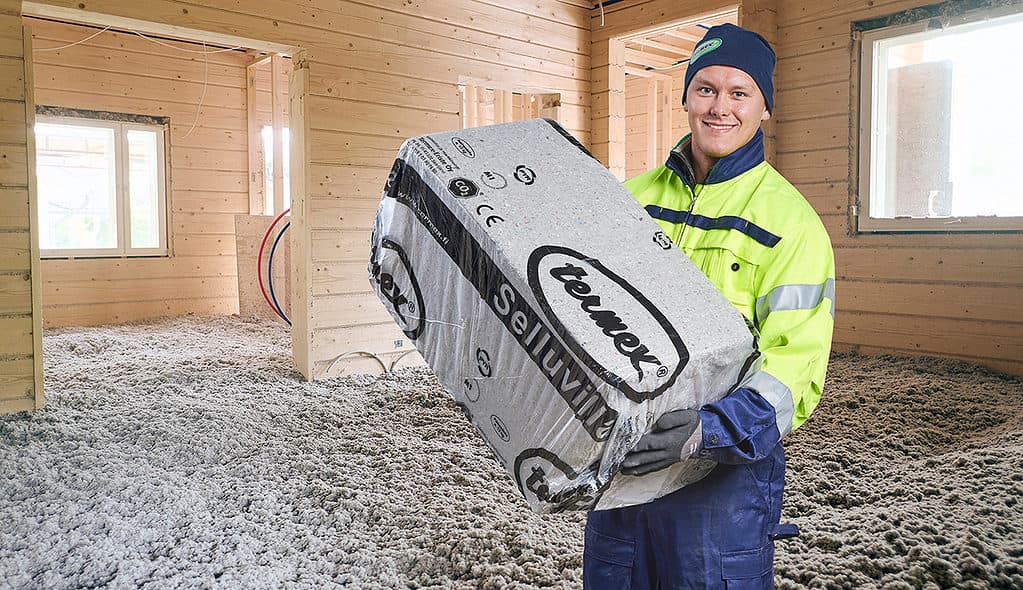Termex products are now CE marked – check the following product features
The year-long CE marking process has finally reached its goal. We can’t help but be happy with the results. Our product development team has done a good job, and we are pleased to present a modern, domestic, blown-in cellulose insulation of the 20s, whose performance is at the very peak in its field.
As an essential part of the CE mark, there is a Declaration of Performance (DoP), in which the manufacturer declares the essential features of the product. There are a variety of practices for this in Finland. It can be difficult for a designer and/or builder to standardise products, because the declared product characteristics are often incomplete or even incorrect – in conflict with the construction product regulation. Mandatory product feature descriptions may be completely missing, or the features may be insufficiently declared. Good examples are thermal conductivity and air permeability.
Thermal conductivity should be reported (λ D(23,50)) at a temperature of 23 degrees in 50% relative humidity, not as so-called dry thermal conductivity (λ10, dry, 90/90). There are often shortcomings here, so it is always worth checking the declared thermal conductivity if it is not clearly mentioned in the Declaration of Performance or the technical product description.
Air permeability should be reported as air flow resistance in relation to density (AFr). The airtightness of cellulose wool improves as its density increases. For this reason, in our Declaration of Performance, we present an airflow resistance curve that makes it easy for the designer to calculate the effects of natural convection on the energy efficiency of the structure, just as the thermal insulation calculation instruction RIL 225 obliges. Density can be easily checked for each installation method by using the smallest number in the density range.
The designer has the obligation to create structural and building-level energy efficiency plans that comply with directives, and to determine the thermal design values of the materials (λu). The builder has the obligation to follow the plans. The customer has the right to demand that the above-mentioned obligations are fulfilled. So, when placing an order for blown-in insulation, check that the product is actually suitable for your purpose and that it meets the product requirements of the work site. Check at least the declared thermal conductivity of the product (λ D), airflow resistance (AFr), settlement (%) and European fire classification (A-F). In addition, find out the blown layer strength in relation to the thermal conductivity (U-value) and the density of the product (kg/m3). Demand that these are documented in the worksheet and house register. This is how you avoid unpleasant surprises over the years.
Find all the information you need for your successful project in Termex’s Declaration of Performance
Download the Declaration of Performance here

Pasi Typpö
The writer is the development and marketing director of Termex-Eriste Oy

